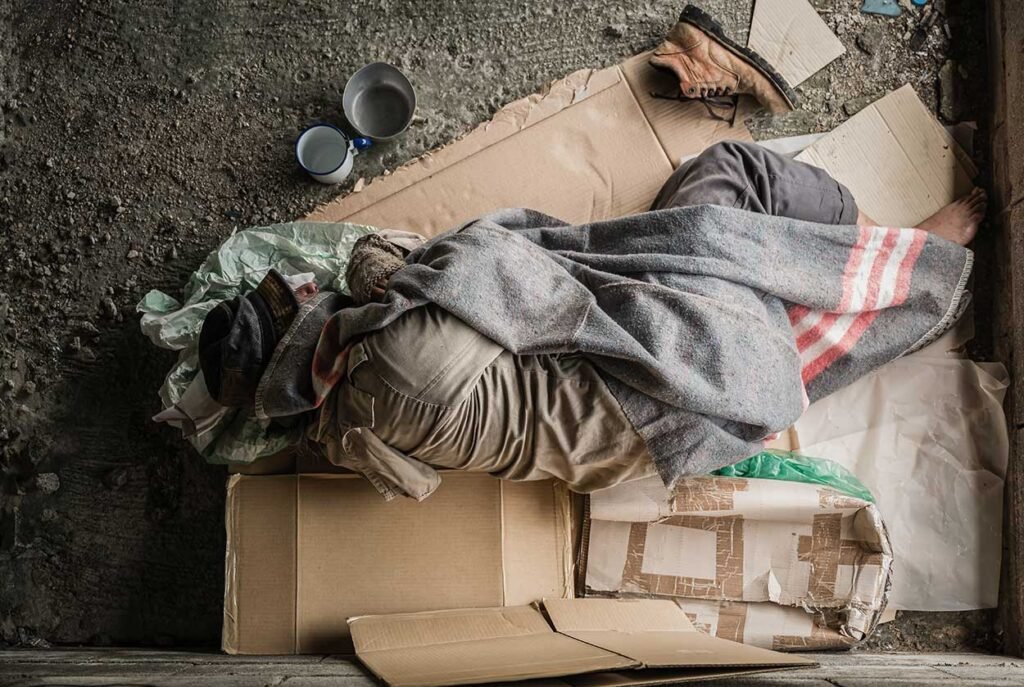If you’ve lived in Tijuana long enough, you’ve probably heard it. Someone mentions downtown, and suddenly the conversation turns into a guessing game about how many people live on the streets. The numbers get bigger with each retelling. Two thousand, three thousand, maybe more. Everyone seems sure, but until recently, nobody actually knew.
That changed when the government decided to find out the hard way. Not with statistics or estimates, but by walking the streets at night and counting every person they could find. They called it the First Nocturnal Census, and it took place in the city’s toughest areas — Zona Norte, the downtown corridor, and the neighborhoods of Playas de Tijuana and San Antonio de los Buenos.
More than 400 public workers joined the effort, including nurses, social workers, and police. They went out with flashlights, clipboards, and patience. What they found wasn’t what anyone expected. Instead of thousands, there were 338 people living on Tijuana’s streets. About 70% were men and 30% women. Most were from other Mexican states, and only one person was from another country, Honduras.
That number may sound low, but it comes with an important caveat. The census only counted people sleeping outside. It didn’t include those staying in shelters, rehabilitation centers, or with friends. It also didn’t include anyone who refused to talk or was already asleep. Even so, it shattered the myth that the city’s homeless population had ballooned into the thousands.
One of the coordinators, Beatriz Olivares, said the team found people from nearly every state in Mexico. Some had been in Tijuana for years, others had just arrived hoping to cross the border, and a few had been deported and had nowhere else to go. A handful were reunited with their families, including a teenage girl who was placed back into the care of the DIF after being found alone on the streets.
The numbers also told a more complicated story about addiction. Only a small fraction of those counted used hard drugs. About 73 people reported using marijuana, 112 drank alcohol, and 31 had accidentally become addicted to fentanyl after being sold drugs laced with it. That last part says a lot about how easy it is for someone’s life to collapse here. Not all of them chose addiction. Some just didn’t know what they were buying.
Then there’s the question of disability. The census found more than 100 people living with physical, visual, or mental disabilities while on the street. Many couldn’t walk well, some couldn’t see, and a few were diabetic and in need of insulin. That night, doctors treated wounds, gave out medicine, and even performed minor procedures right there on the sidewalk.
The real surprise wasn’t in the data, but in what it disproved. Officials had been told that up to 3,500 people were living on the streets of Tijuana. Some local YouTubers and commentators claimed the city was a “zombie zone.” The census walked those same streets and found something very different — a harsh reality, yes, but not the apocalypse people had been describing.
What this effort showed is that rumors grow faster than facts, especially in border cities where the line between perception and fear blurs easily. It also showed that the government, for once, is trying to base social programs on real numbers instead of recycled assumptions.
The next census is scheduled for December. This time, they’ll expand into the eastern neighborhoods, places like La Presa and Otay Centenario. The goal isn’t just to count people again, but to track whether anyone from the first round is still on the streets, or if they’ve found help.
Tijuana still has a homelessness problem, but maybe not the one everyone imagined. It’s not a tidal wave of lost souls; it’s a steady trickle of people slipping through the cracks, one by one. And for the first time, someone is out there counting them, not to shame them, but to bring them back into view.


